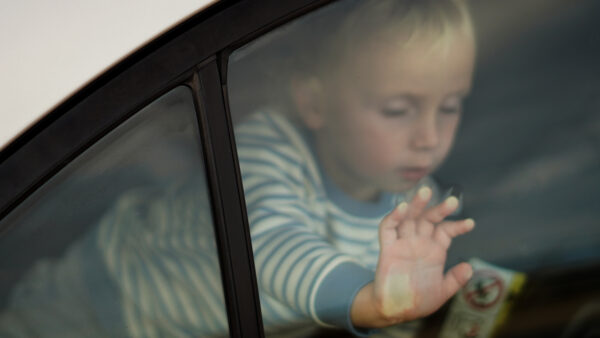Each year, heartbreaking stories emerge about children who’ve died after being left alone in hot vehicles. While most caregivers believe it could never happen to them, the reality tells a different and devastating story. At resqme, Inc., we are committed to raising awareness and equipping communities with tools and information that can prevent these tragedies.
The Shocking Statistics
According to the National Highway Traffic Safety Administration (NHTSA) and Kids and Car Safety:
- 20 children have already died in hot cars in 2025.
- 39 children died from heatstroke in hot cars in 2024.
- Since 1990, at least 1,137 children have lost their lives due to being left in hot vehicles.
- On average, 37 children die each year from vehicular heatstroke.
- 2018 and 2019 were the deadliest years on record, with 53 deaths each.
These aren’t just numbers, they represent young lives lost to preventable incidents.
Why Hot Cars Are So Dangerous
A vehicle’s interior heats up much faster than the outside air, and children are especially vulnerable:
- A child’s body temperature rises 3 to 5 times faster than an adult’s.
- When their core temperature reaches 104°F (40°C), heatstroke can set in.
- At 107°F (41.7°C), it can cause organ failure, brain swelling, and death.
Even on a mild day, the temperature inside a car can become deadly in just minutes, especially when parked in direct sunlight.
Common Risk Factors
Several conditions contribute to rapid heat buildup and greater risk:
- Outside temperature – Even in the 60s or 70s (°F), interiors can soar past 100°F.
- Sun exposure – Direct sunlight accelerates internal temperature.
- Age of the child – Infants and toddlers are the most vulnerable.
There is no safe amount of time to leave a child in a vehicle.
Prevention Starts With Awareness
Simple habits can help prevent tragedy:
- Never leave a child alone in a car, not even for a minute.
- Create reminders – Place a personal item (like a purse or phone) in the back seat.
- Communicate with caregivers – Double check drop-offs or pickups, especially during changes in routine.
- Call 911 immediately if you see a child left alone in a vehicle.

Understanding the Forgotten Child Syndrome
Forgotten Child Syndrome refers to the heartbreaking and often misunderstood situation where a parent or caregiver unintentionally leaves a child in a vehicle, typically due to a lapse in memory. According to Kids and Car Safety, this often happens when the brain’s memory systems become overwhelmed, especially under stress, lack of sleep, or changes in routine. In these moments, the part of the brain responsible for forming new memories can be overridden by “habit memory,” causing someone to forget something as critical as a child in the back seat. This can happen to anyone, regardless of how loving or attentive they are. Raising awareness about this phenomenon is essential, because with proper understanding and safety measures, these tragedies are entirely preventable.
Good Samaritan Law: Empowering Bystanders
In many U.S. states, the Good Samaritan Law protects individuals who take action to rescue a child in danger, even if it involves breaking a car window. These laws are designed to encourage immediate action when lives are at risk.
Here’s what you need to know:
Legal Protection:
If you break into a car to save a child in danger, many states offer legal protection. These laws can shield you from being sued or charged for things like property damage or trespassing, as long as you’re acting in good faith.
Reasonable Belief of Danger:
To be protected under the law, you must reasonably believe the child is in immediate danger, whether it’s from extreme heat, cold, or lack of air circulation. In hot car situations, every minute counts, and the risk is often clear and urgent.
Important Conditions to Follow:
While these laws support bystanders who take action, there are a few steps you need to follow:
- Try to find the car’s owner first, if you can.
- Call 911 before entering the vehicle, if it’s safe and practical to do so.
- Use only as much force as necessary to get the child out. Some states allow you to break the window if you believe the child is in a life or death situation. Remember to break the opposite window from where the child is located to avoid harming the child with debris of broken glass.
- Stay with the child in a safe place until emergency responders arrive.
Be informed about how the Good Samaritan Law applies in your state and don’t hesitate to act. Time is critical.
Be Prepared: The resqme® Tool
At resqme, Inc., we offer a simple yet powerful device that can help save lives: the resqme® car escape tool. This compact, keychain-size safety tool is designed to:
- Break tempered-glass car windows instantly
- Cut jammed seat belts with ease
- Be readily available in emergencies
Whether you’re a parent, caregiver, or Good Samaritan, having a resqme® tool within reach can make a life-saving difference. If you see a child trapped in a hot car you can use the resqme® to rescue them. The car escape tool can cut a seatbelt and shatter a tempered glass window when seconds count! Its razor sharp stainless steel blade and heavy duty window breaker makes it guaranteed to help you and others escape a hot car.
Together, We Can Prevent Hot Car Deaths
These tragedies are 100% preventable. By staying alert, spreading awareness, and being ready to act, we can protect children from this serious danger.
At resqme, we believe in empowering everyday heroes because safety is everyone’s responsibility.
Look before you lock. Share the message. Carry the resqme® car escape tool.


